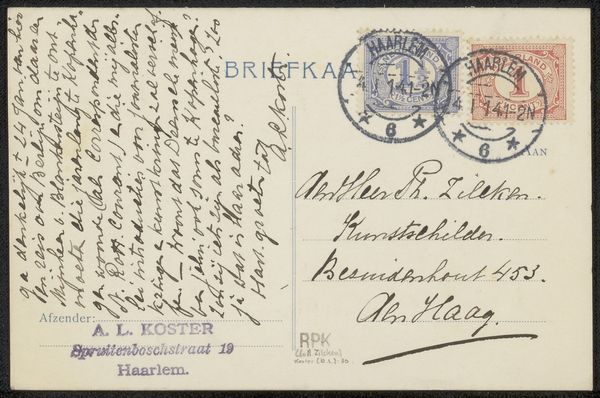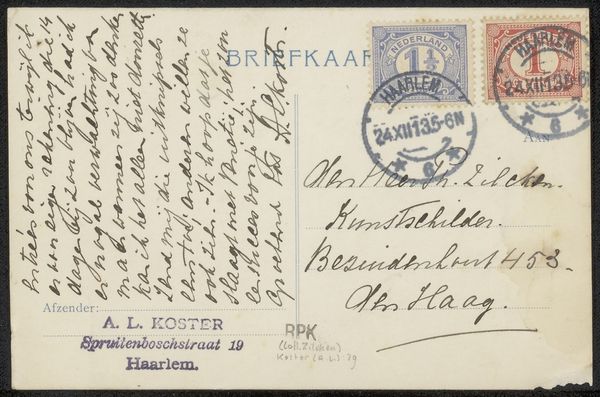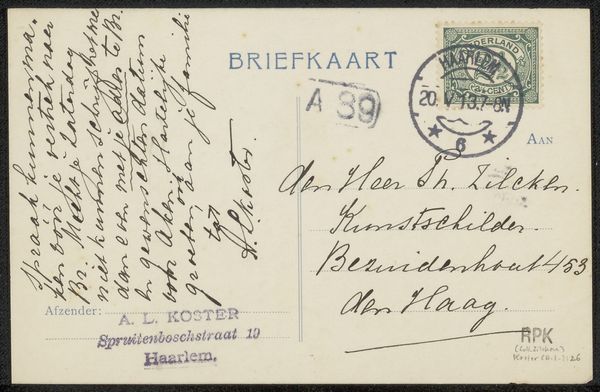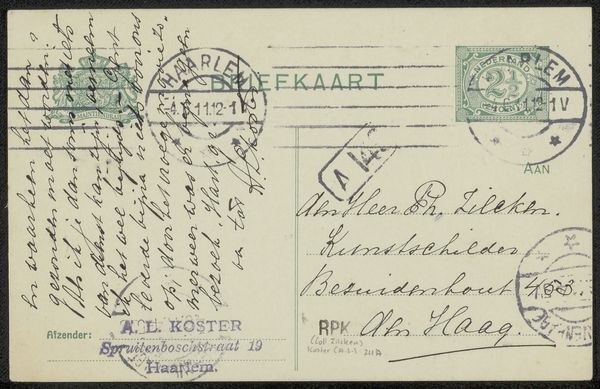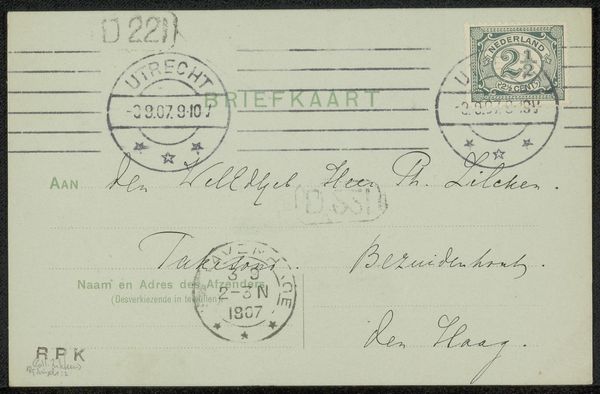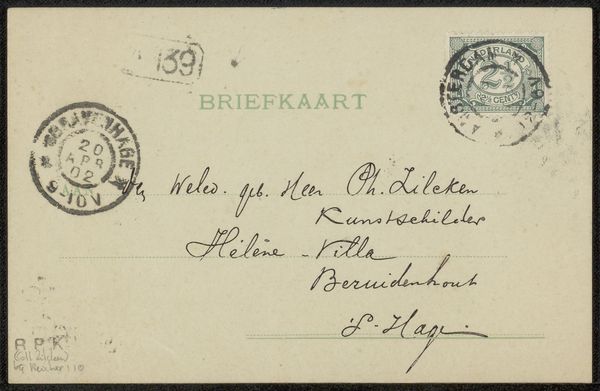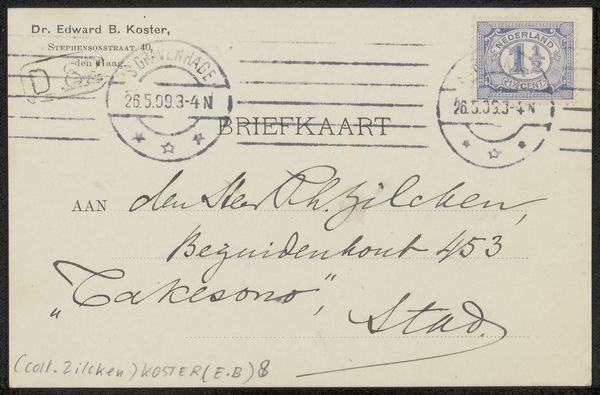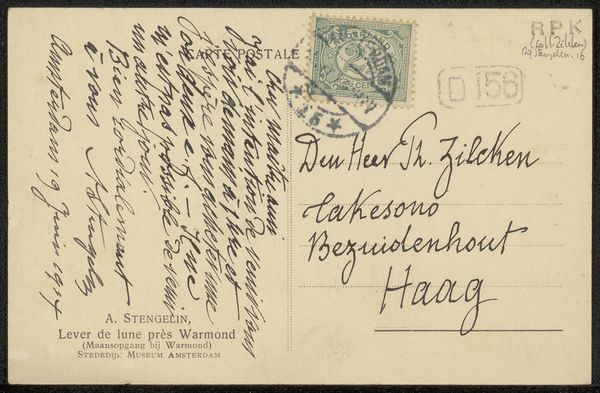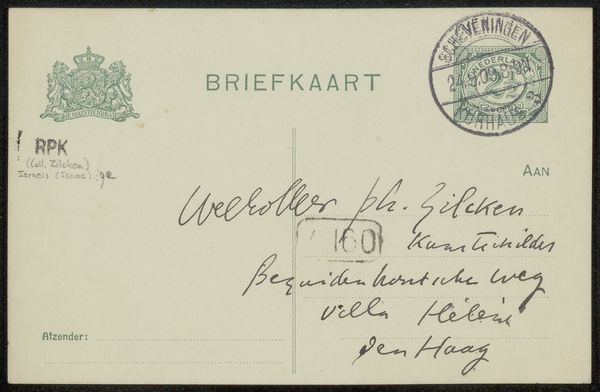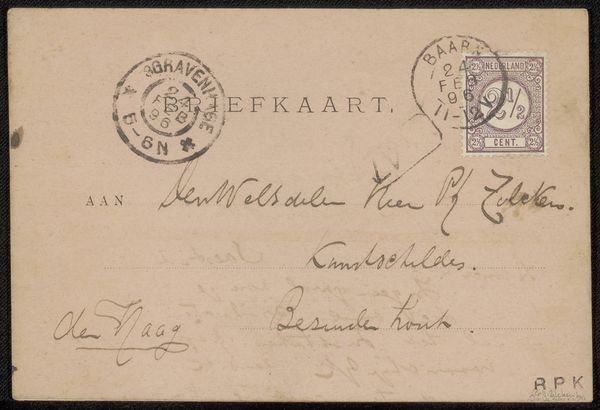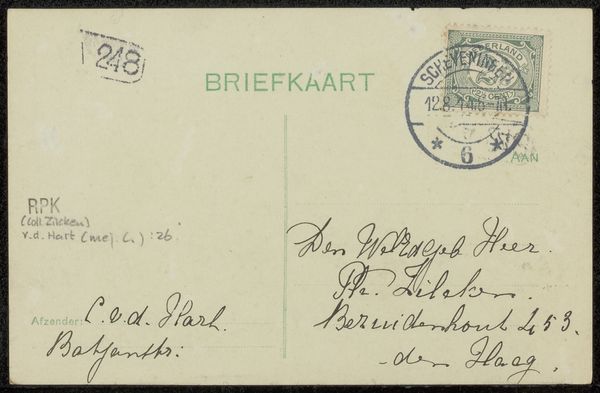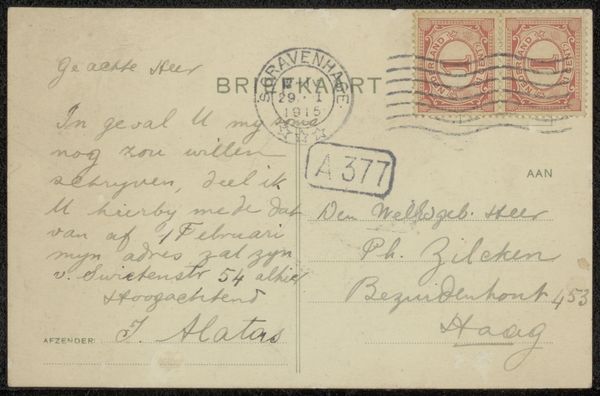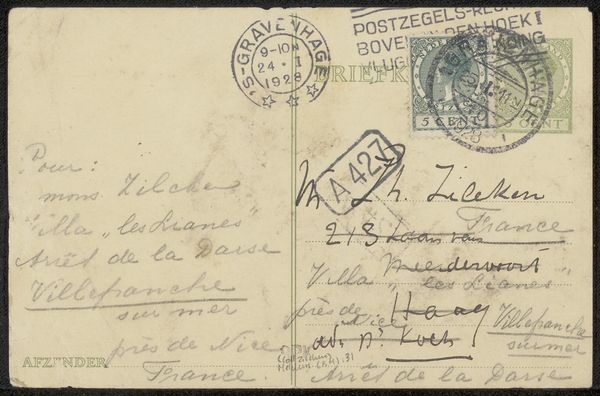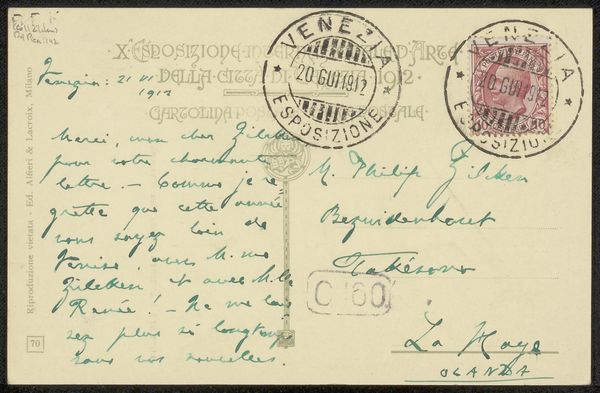
drawing, print, paper, pen
#
drawing
# print
#
paper
#
personal sketchbook
#
pen work
#
pen
Copyright: Rijks Museum: Open Domain
Editor: Here we have a postcard, titled "Briefkaart aan Philip Zilcken" – that’s "Postcard to Philip Zilcken" in English. It's from before 1919, made with pen and ink on paper, seemingly a personal note. It strikes me as incredibly intimate, given the handwritten script. What can you tell me about it? Curator: This "Briefkaart," seemingly a quick note between artists, offers a fascinating glimpse into the art world's social dynamics during the early 20th century. What does the fact that it was considered suitable for the postal service reveal about the relationship and their era? Editor: I see what you mean. It’s almost like a public display of a private thought. Did artists often communicate this way? Curator: Absolutely. This exchange is part of a larger network of correspondence that played a vital role in circulating ideas and fostering a sense of community amongst artists. How might this sort of direct communication have shaped artistic movements of the time? Editor: Well, I imagine it allowed for quicker dissemination of ideas than formal publications. It makes me wonder, too, about the accessibility. Who would have seen this exchange beyond the recipient? Curator: Think about who collects postcards now, or in the past. Philip Zilcken may have been famous for keeping the notes, the museum is now, but it also may be read by mail carriers. The public role of an image on a card is that its accessibility transcends its intimate content, right? It existed, if mailed, in an ephemeral and public medium as part of daily communication and connection. Editor: That’s an interesting point. It feels like the artwork is both incredibly personal and deeply connected to a specific social context. Curator: Exactly. That tension is crucial for understanding its significance beyond a simple greeting. What does art offer when placed in public domains? How do people, institutions, and society receive it? These factors may all come in to play when considering how the artist and recepient want the image to live within our society. Editor: I never thought about postcards this way, as a window into both personal relationships and wider social currents. It’s made me consider how art exists not in a vacuum, but as part of ongoing dialogues. Curator: Precisely. This "Briefkaart" reminds us that art history is just as much about the mundane details of everyday life as it is about grand movements and manifestos.
Comments
No comments
Be the first to comment and join the conversation on the ultimate creative platform.
